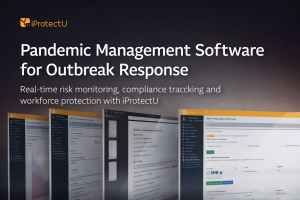Overview of The Worker Protection Act
The Act is an amendment of the Equality Act 2010. It will place a legal duty on employers to take measures to prevent sexual harassment at work. It highlights a significant shift from ‘reactive’ to ‘proactive’ measures. Employers will need to implement ‘reasonable steps’ to prevent sexual harassment in the workplace, as opposed to just reacting to complaints and dealing with the consequences.
Several factors triggered the introduction of the Worker Protection Bill, but a key catalyst was the report by the Women and Equalities Select Committee (WESC) in 2018 which highlighted the extent of sexual harassment experienced by UK workers, particularly women. According to the report, 40% of women had experienced sexual harassment in the workplace at some point. The global #MeToo movement was also a driving factor behind the Bill.
Detailed guidance will likely be released this September, however there are some steps businesses can take now.
Steps Employers can take in preparation for the Worker Protection Act
Provide Sexual Harassment Training
Companies should provide regular sexual harassment training for all employees, so they understand that there is zero tolerance when it comes to harassment and bullying in the workplace.
Employees need to understand what sexual harassment is and what their role is in preventing or dealing with it. Ideally, training will equip employees with the tools to recognise and understand inappropriate behaviour, often disguised as jokes or ‘harmless banter’. Bystander intervention should also be addressed, where employees learn how to effectively support colleagues experiencing harassment.
Managers will need clarity on what constitutes bullying, harassment and sexual harassment, and should know exactly what to do if an employee reports an incident to them. When it comes to victims, managers must be aware that there is no ‘one size fits all’; the experience of each victim is likely to be different. Signs and symptoms may include increased time off work, extra sick days, refusal to work with certain colleagues, changed behaviour, or reduced engagement.
During the onboarding of new employees, managers and HR will need to ensure the induction programme reinforces the company’s expectations in terms of culture and behaviour.
Create an Inclusive Culture
Fostering an inclusive culture is key; it is ultimately what will underpin all processes and policies related to preventing sexual harassment. Company leaders and managers significantly influence the workplace culture, and set the tone surrounding workplace behaviour, particularly the way employees interact with one another. Leaders will need to demonstrate that they buy into a culture of respect and zero tolerance when it comes to harassment.
Additionally, psychological safety is important, and employees should be encouraged to ‘speak up and speak out’. Coach employees on how to raise concerns and reassure them that they will not be punished or reprimanded if they do speak up.

Develop a Sexual Harassment Policy
It’s crucial to have a strong written sexual harassment policy in place, one which outlines what constitutes unacceptable behavior. The policy should define sexual harassment and emphasize the breadth and complexity of this issue. It will need to document the manager’s responsibilities for preventing and tackling sexual harassment. It should include clear reporting procedures, protect confidentiality, and guarantee a fair investigation process. The policy should be accessible to all employees.
HR professionals must also assess the effectiveness of their current protocols in preventing and addressing instances of sexual harassment, identifying any gaps that need to be closed.

Manage Complaints Effectively
Defining a clear complaints procedure which all employees understand is critical. It should be straightforward for employees to report any inappropriate behaviour. Line managers should check in with their team regularly and give them opportunities to report concerns. It might be worth considering the provision of software, for example, an anonymous app where employees can raise any grievances. Technology could be used to monitor and update complaints. All complaints should, of course, be responded to promptly and comprehensively. It may be worth using an external agency to handle investigations and to potentially support employees during a sexual harassment crisis.
Monitor and Evaluate
Employers need to stay informed about what is going on at their workplace. Similarly, if any formal or informal complaints about workers or departments have been made previously, employers should probe deeper into these to understand all the complexities, ensuring bias is not a factor. Managers can gain an understanding of their existing workplace culture by looking at available data including exit interviews, Glassdoor reviews and market perception of the company. Employee surveys can also provide insight – effective monitoring will create a bank of data that the organisation can harness in the longer term.
The consequences of non-compliance will be substantial
While the Act avoids defining “reasonable steps,” tribunals will have the ability to increase compensation by 25% in cases where employers demonstrably failed in their duty.
There will be reputational issues too. Gaining a reputation for a non-inclusive work environment will no doubt damage a company’s brand and make it more challenging to hire good people. In addition, there will be an impact on customers and clients. Organisations will need to be proactive. The Act is a significant step towards a safer and more inclusive work environment.









